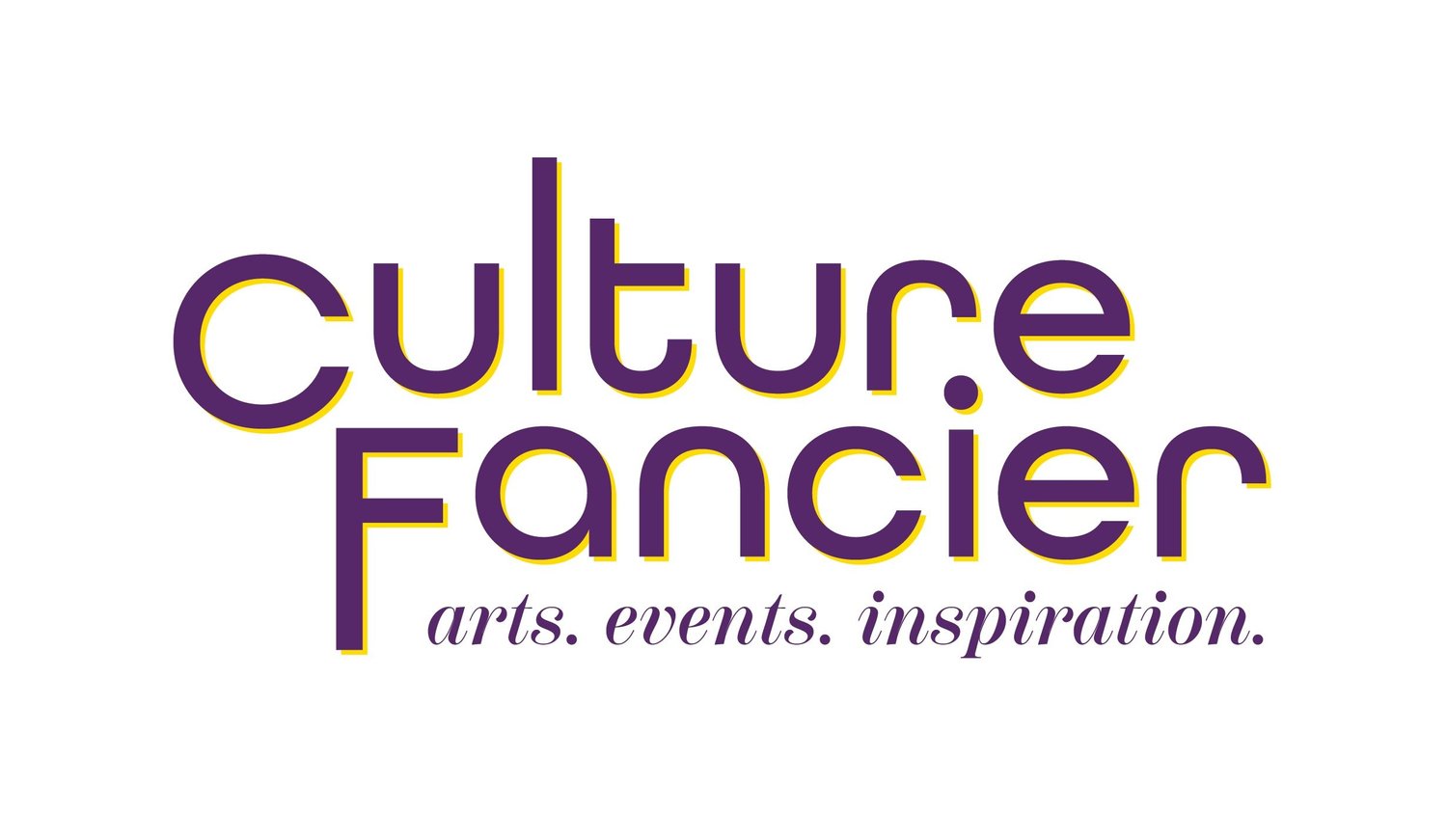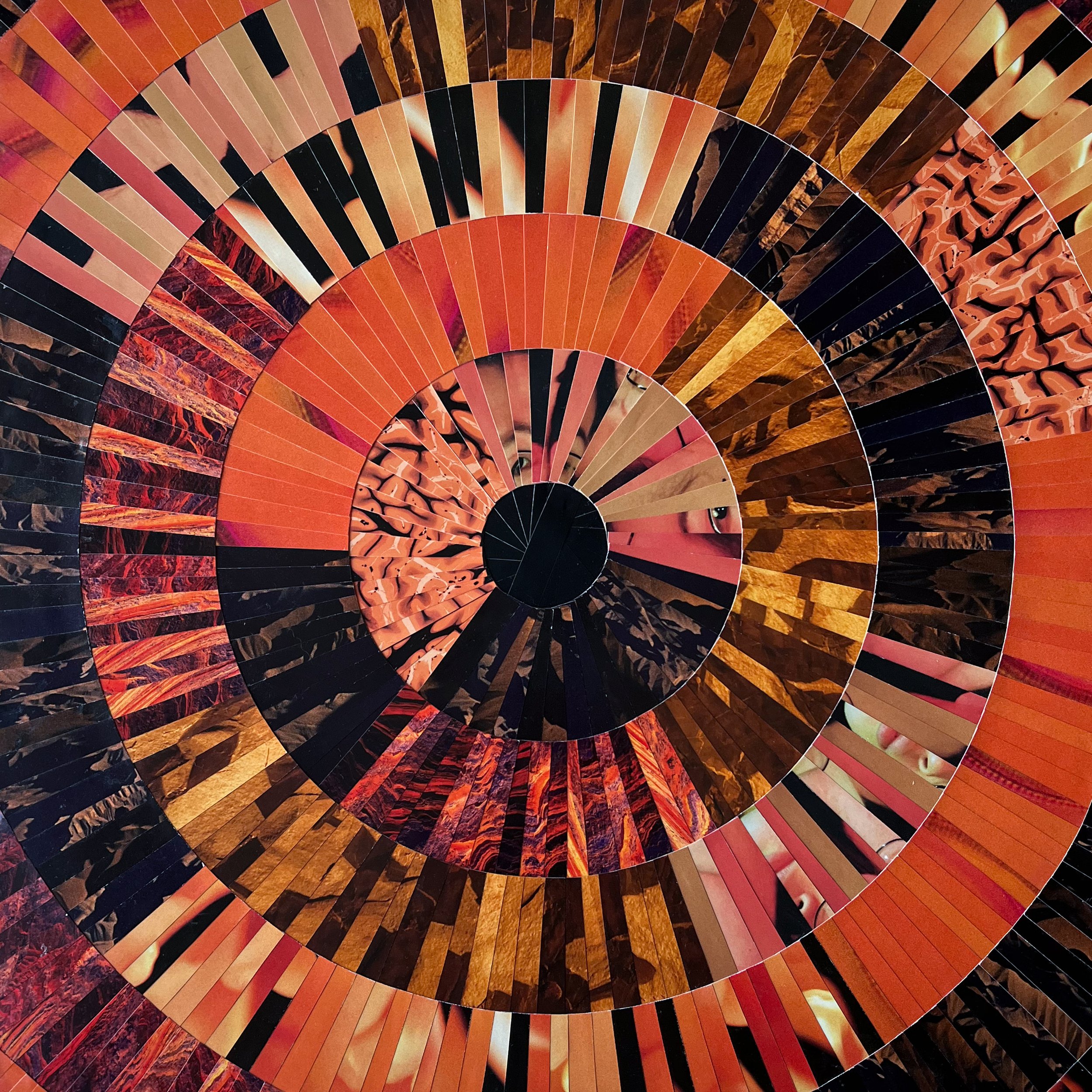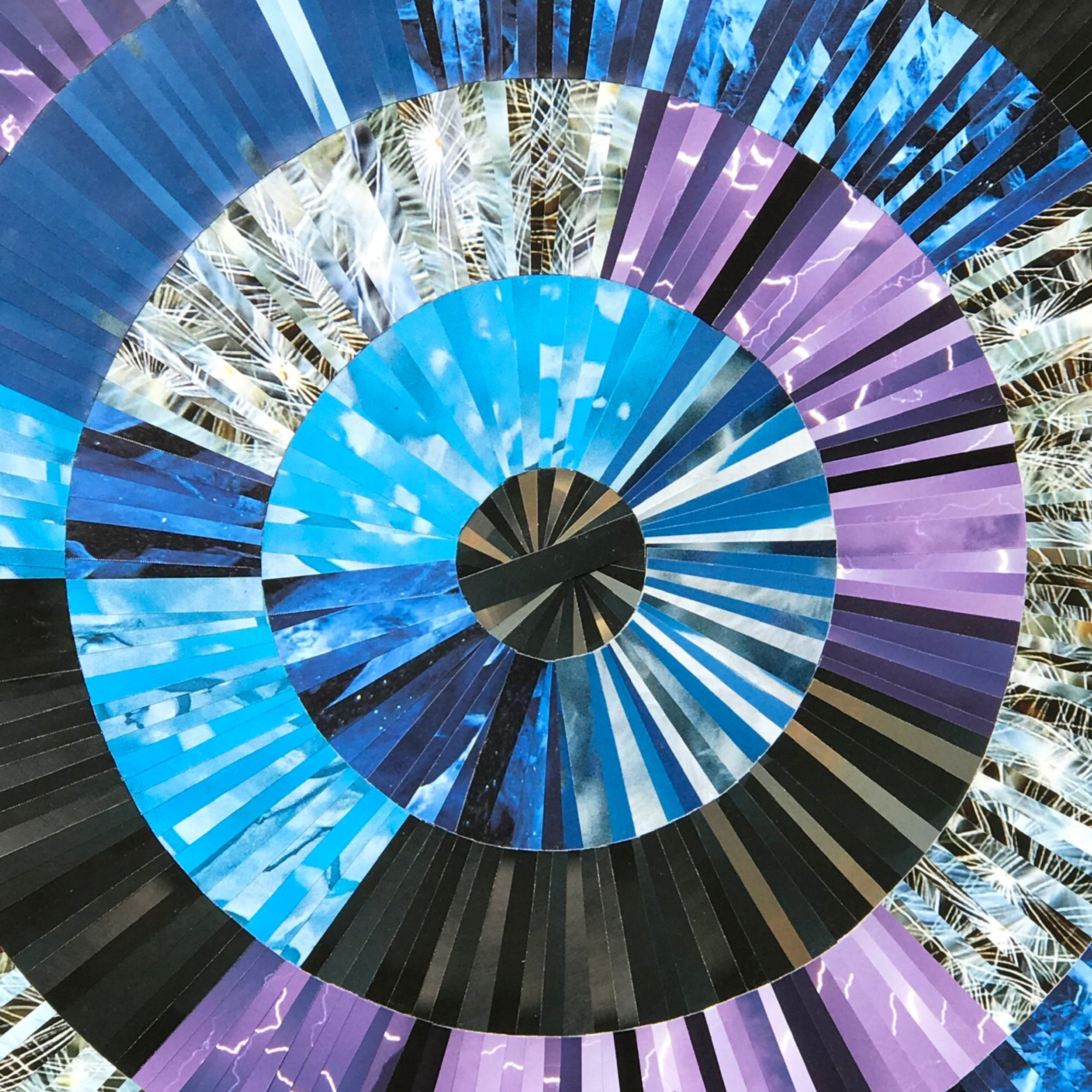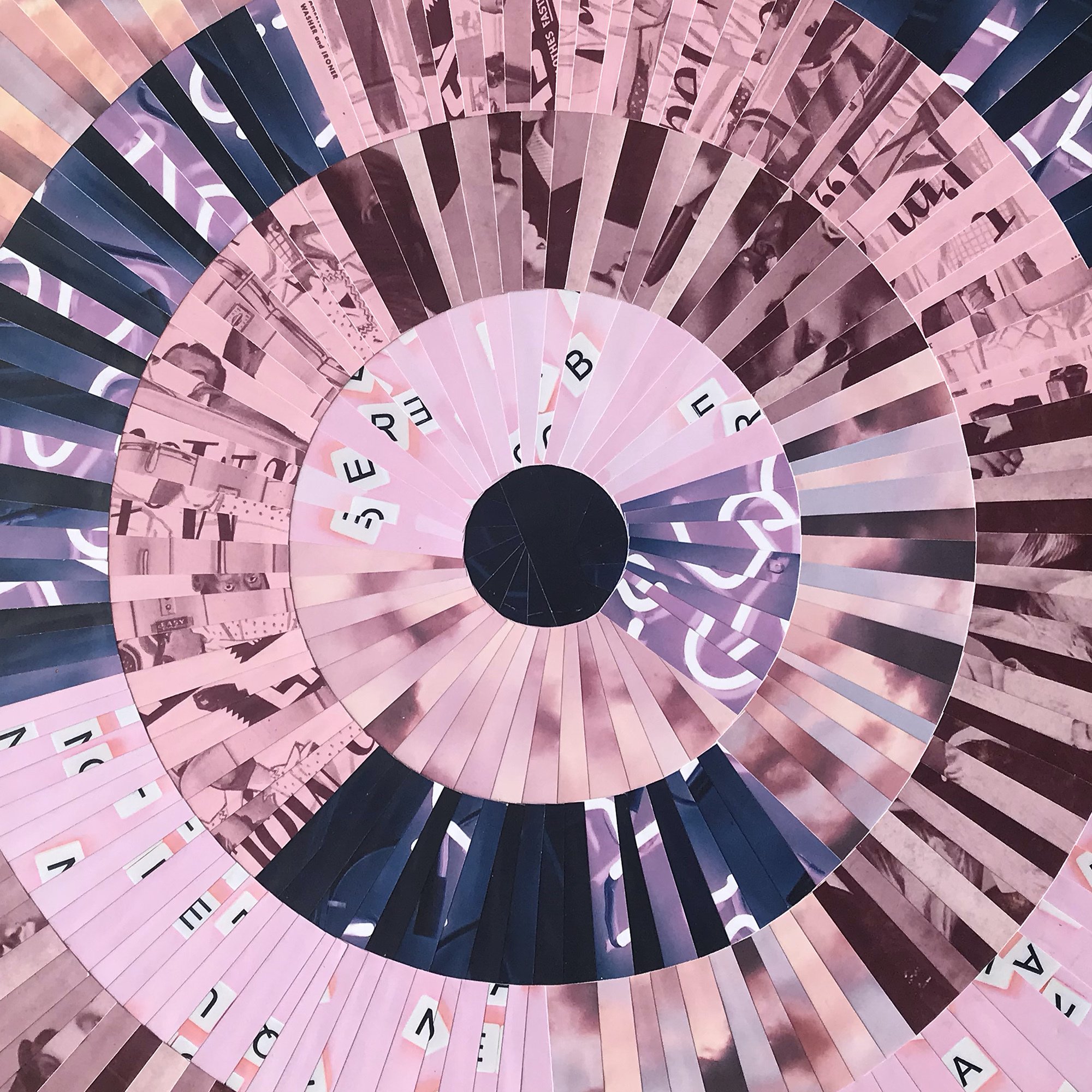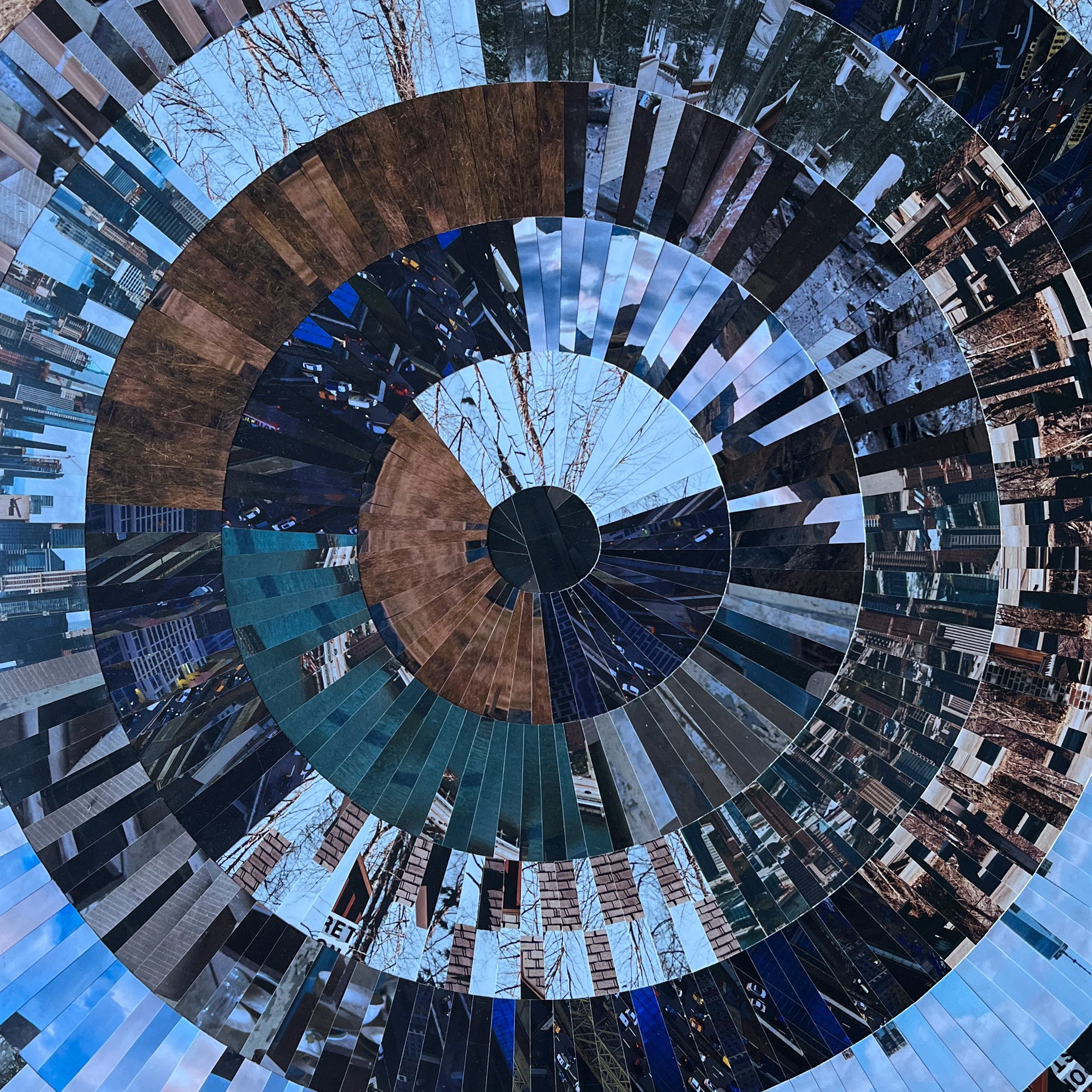Me, Trying: Having the Courage to Change is a solo exhibition of paper and resin collage by The Dead Ant, an emerging artist based in Waterloo. The artist uses cut-up paper to symbolize the fragmented pieces of their being. The precise and meticulous assembly of these fragments reflects the artist's journey towards growth and transformation.
The Dead Ant was part of a pop up we held at Minds Eye Studio Art Gallery and Yoga Studio in November 2021. We were pleased to welcome him back to the gallery for a solo exhibition from March 26th – April 23. Private viewing are available and the artist reception will be on April 21st from 7:30-10 pm. Event info is here.
Artist Statement
This exhibition, Me, Trying: Having the Courage to Change, is a reflection of my personal journey towards self-discovery and transformation. When I began this series, I was at a point in my life where I had no clear direction and struggled to find my true identity. Drawing inspiration from the Japanese art of kintsugi, which celebrates the beauty of imperfection and the process of repairing broken objects, I used cut-up paper to represent the fragmented pieces of myself. By arranging and layering these pieces with care and precision, I was able to create something new and beautiful, emblematic of my own journey towards growth and transformation. What started as an exploration of what makes a person, ultimately became a reflection of who I wanted to become. Through this exhibition, I hope to inspire others to embrace change and have the courage to grow in their own lives.
Exhibition Statement
The exhibition's title, Me, Trying: Having the Courage to Change, speaks to the challenging but vital practice of healing and living an authentic life. Drawing inspiration from the Japanese art of kintsugi, which celebrates imperfection and the process of repairing broken objects, The Dead Ant’s work began as an exploration of what qualities make a person and what kind of person the artist wanted to become. The circular, abstract collages employ cut-up paper as a representation of the fragmented pieces of oneself. The artist's careful arrangement and layering of these pieces creates something new and captivating, reflective of their own journey towards healing and introspection.
Through this exhibition, The Dead Ant hopes to inspire others to embrace change and have the courage to pursue growth and healing. Me, Trying: Having the Courage to Change is an absorbing exploration of the human experience and the transformative power of self-discovery.
“Experiment and make lots of mistakes. Find something that you enjoy doing and with which you are not hindered by perfectionism.”
I’m sure most people think your artist name is in reference to the movie of the same name, but I recall asking you about this before and you said it wasn’t. How did you choose your artist name?
I came up with it back in elementary school without giving much thought to its meaning. My own interpretation of the name is evolving, just like how the interpretation of a work of art can change each time you revisit it. It has meant everything from a symbol of renewal and transformation, similar to the Death card in Tarot, to the yearning to break free from the monotonous capitalistic system. I was inspired to take a pseudonym by musicians like Lady Gaga and David Bowie. I was attracted to the idea that creating a character gives me a sort-of magical identity that connects me to my art and allows me to tap into the power of imagination and create a new reality.
You drew inspiration from the Japanese art of kintsugi. Have you ever tried it?
I never have. When I first learned about it, I had plans to incorporate it more overtly in my work, but my ideas evolved quickly in my head and I never got around to using the gold paint. Despite this, the philosophy behind kintsugi has remained a powerful source of inspiration for me. As a creative and philosophical concept, it encouraged me to appreciate imperfection, embrace healing, and find beauty in the brokenness of life.
When selecting images to promote Me, Trying: Having the Courage to Change, you said that Self is the thesis. This is one of the few pieces in this exhibition that is not colourful like the rest. Why do you see Self as the thesis piece, and when was it created in relation to the other pieces in the exhibition?
“Self” was one of the last works that I produced for this exhibition. I knew I wanted to make a piece titled “Self” and that it would be white which represents a blank slate and a space for endless possibilities. As I was selecting images to use I realized that “Self” should serve as the culmination of the journey of self-discovery and healing that the exhibition portrays. As a result, I felt a pressing urge for the piece to reflect myself, incorporating elements that I found personally stimulating, inspiring, and deeply significant.
Self, The Dead Ant
Your work is intricate, and the circular arrangements give some of the pieces an eye effect. Was that intentional to match the themes of introspection in this series?
I commonly get asked if they are meant to be eyes, particularly when they find out I’ve worked in the optical industry. Perhaps the eye design was imprinted in my subconscious. When I first started creating these pieces, my intention was for the black, pupil-like center to act as a beacon, drawing the viewer in and inviting them to explore the details in the piece. It turned out to be a happy accident that they ended up resembling an eye. This unintended result added a new layer of depth to the piece, and it ended up being more impactful. Sometimes, the best results come from unexpected outcomes in the creative process.
From left to right: Gonzo, Identity, Spirit, Direction. The Dead Ant
What is your creative process for making a piece? (Do you use images from a certain genre? Are you working on multiple pieces at once?)
My creative process varies from piece to piece, as each one can be inspired by different elements, whether that be a theme, a look, a colour, an image, etc. However, while working on this particular series, I was hit with a sudden influx of ideas. I wrote down the names, themes, and colours for each piece. Then, I sifted through my library of images to find ones that fit each idea. If I couldn't find enough suitable images, or if I had a particular image in mind that wasn't in my library, I turned to the internet to search for images and find their sources. Each piece is constructed one at a time, following a process that has remained largely unchanged. I begin in the centre with black or the darkest colour present in the images I'm using for that particular piece. As I create each row, I take great care in considering the composition and images, ensuring that they best represent the mission of the piece.
What is your dream creative project?
Creating large-scale color field collages in the style of Mark Rothko has been a long-time goal of mine. Rothko strived to produce artwork that was so awe-inspiring that it could evoke tears from the viewer. I haven't had the opportunity yet to fully experiment with size as a method for adding emotion to my work. As an artist, I create each of my works as a part of a larger exhibition, a fragment of a larger narrative. My ultimate aspiration is to be able to present these shows, like at Mind's Eye Studio and Gallery. Those opportunities can be hard to find as an aspiring artist.
What advice do you have for anyone who is hoping to use art as a tool for their journey of transformation?
Experiment and make lots of mistakes. Find something that you enjoy doing and with which you are not hindered by perfectionism. For me, that was acrylic paint pours. I found that I wasn't as concerned with the end result as I was with enjoying the process of creating something. Eventually I found that art can allow you to express your feelings and emotions in a safe and creative way, which was incredibly therapeutic. So, for me, it evolved from an activity I used to distract my mind, to a way of communicating and working through my inner thoughts.
Follow The Dead Ant on Instagram
Interview by Glodeane Brown
If you liked this post please like, comment, and share.
